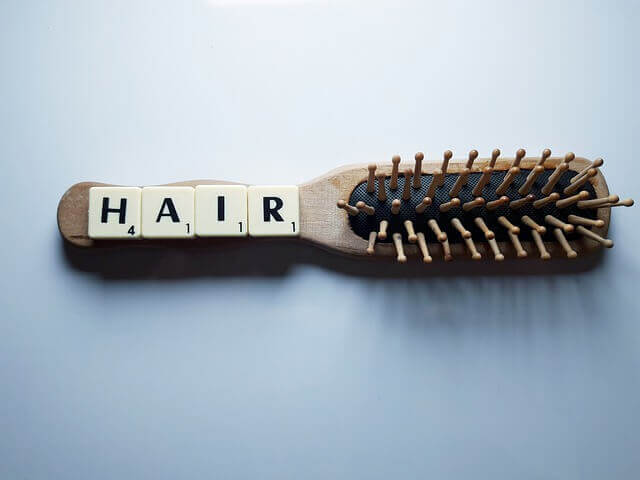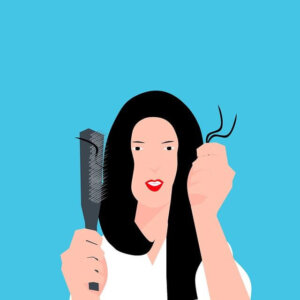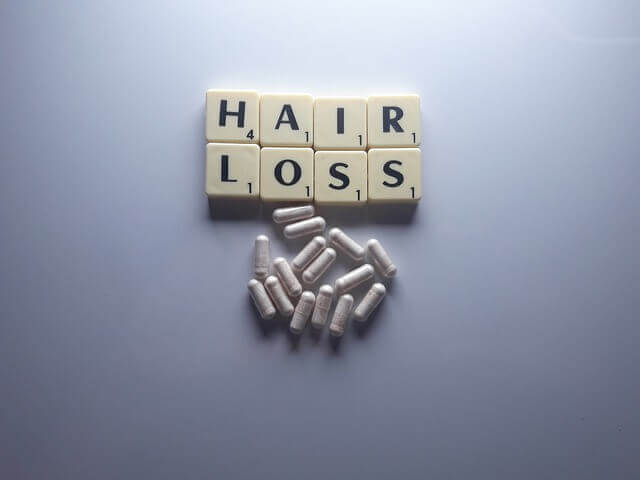Hair loss and hair fall are often used synonymously. But, do you know both of them are different? You need to know why they take place and what to do to arrest the problem. Today’s post will give you this insight into these differences in Hair Fall Vs Hair Loss.
Understanding hair fall vs hair loss
Do you know hair fall is a natural biological process that occurs daily in your body? When new hair grows in the follicles, your old hair falls. Like trees, your hair also goes through the natural process of rest and fall. Leaves depend upon the seasons and your hair fall relies on your-
- Genetics (Ayurvedic Prakriti)
- Age
- Nutrition
- Metabolism
- Lifestyle
How much hair does the human scalp have

At an average rate, healthy hair growth in humans is about 0.35mm daily. The terminal hair count on the scalp ranges from 80,000 to 120,000.
How much hair fall is considered normal?
As per the American Academy of Dermatologists, the falling of 50 to 100 hair strands per day is normal. However, you might not notice this if you have short hair, it becomes more noticeable in people with longer hair.
Modern science and the stages of hair growth to fall (explained)
Hair growth begins in a single follicle. It receives essential nutrients for growth from its base blood vessels. The life cycle of hair on the scalp from growth to fall passes through four stages-
- Anagen
- Catagen
- Telogen and
- Exogen
Let us understand them, one by one, below-
1. Anagen or the growth phase -This phase determines your hair length and lasts for two to seven years, on average. During this stage, your hair can grow up to a length of three feet.
2. Catagen or the transition phase-At this stage, the hair follicle shrinks and the hair strand will detach itself from the dermal papilla. The duration of this phase ranges from 14 to 21 days.
3. Telogen or the resting phase– This is the phase where the new hair begins its growth inside the follicle. It pushes the old hair out and generally lasts for around three months.
4. Exogen or the new hair phase- This is the stage where the old hair falls out and the new hair continues its growth. The exogen is the final segment of the telogen phase.
When the hair grows through the anagen phase for a duration that is more or less reasonable and gradually comes to the exogen stage, the hair fall is to be considered normal. A human scalp, daily loses around 50-100 strands of hair naturally.
However, with ascending age, the duration of the anagen stage decreases and so does every cycle naturally.
So, the interesting fact here is at any given point of time only 10% of your hair is in the resting stage and 90% in its growing stage.
When should you be concerned about hair fall?

When you observe hair thinning at an alarming rate due to excess hair fall, this is an indication that the hair is entering into the exogen sooner than expected. This can be triggered due to the –
- Lack of proper nutrition, or
- Metabolic imbalance
If ignored, hair fall will lead to hair loss.
Understanding hair loss
In case, you are losing over 100 hair strands daily, you might be undergoing telogen effluvium or excessive hair shedding. However, if you notice bald patches or thinning hair on your scalp, this is hair loss. In case, you experience excessive hair fall resulting in patches for over three months, there is a high possibility that you have alopecia areta. (Type of hair loss)
Abnormal loss of hair

In case, you notice more than 150 strands of hair falling daily, consider it as abnormal loss of hair. You must consult your doctor or a skilled consultant in Ayurveda to know its underlying causes. Sometimes hair loss is an indication of a serious underlying medical condition, illness, liver problems or an imbalanced thyroid.
Other factors like age, stress, pollution etc, will accelerate hair loss. Besides medications, one should embrace a balanced diet and healthy lifestyle to control hair loss.
Hair fall- men versus women
Approximately 70% of men while 40% of women undergo hair loss during their life. Men are highly prone to androgenic alopecia that is generally genetic in nature. This type of hair loss is caused due to the hormone Dihydrotestosterone (DHT) in men. It originates from the testosterone that blocks the vessels in the blood inside the hair follicles and stops the supply of nutrients for hair growth. This results in the hair follicles to shrink and results in hair loss.
Women might experience this DHT-induced hair loss as well but the condition isn’t as severe as it is in men primarily because of their different genetic dispositions. Men mostly experience a receding hairline, thinning hair on their scalp and often a horseshoe-shaped pattern with the crown of the head exposed. Women experience hair loss in the form of hair thinning especially near or on the crown of their heads.
Haircare products like oils and shampoos can be purchased to arrest the issue of normal hair fall however, if it persists and becomes severe leading to hair loss, consult a doctor immediately.





